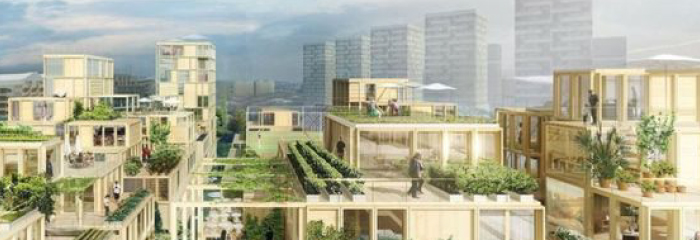SUSTAINABLE ARCHITECTURE IN 2022

Embracing Renewable Energy
One of the key pillars of sustainable architecture is the
integration of renewable energy sources. From solar panels and wind turbines to
geothermal heating and cooling systems, there are numerous ways to harness the
power of nature to reduce our reliance on fossil fuels. In 2022, we're seeing a
growing emphasis on incorporating renewable energy systems into building
design, from residential homes to commercial developments, helping to reduce
carbon emissions and lower energy costs in the long run.
Passive Design Strategies
Passive design strategies play a crucial role in sustainable
architecture, optimizing a building's natural resources to minimize energy
consumption. In 2022, architects and designers are increasingly incorporating
passive design elements such as orientation, insulation, natural ventilation,
and daylighting to enhance comfort and energy efficiency while reducing the
need for mechanical heating and cooling systems. By maximizing natural light
and ventilation, we can create spaces that are not only more pleasant to
inhabit but also more environmentally friendly.
Green Building Materials
The choice of building materials has a significant impact on
a project's environmental footprint. In 2022, sustainable architects are
prioritizing the use of eco-friendly, locally sourced materials that are
renewable, recyclable, and low in embodied energy. From reclaimed wood and
recycled steel to sustainable concrete alternatives and non-toxic finishes,
there's a wide range of green building materials available that can help reduce
waste and minimize environmental impact without sacrificing quality or
aesthetics.
Biophilic Design
Biophilic design, which seeks to connect people with nature
through the built environment, is gaining momentum in 2022 as architects
recognize the numerous health and wellness benefits of incorporating natural
elements into design. From green roofs and living walls to indoor gardens and
natural materials, biophilic design strategies not only improve air quality and
promote biodiversity but also enhance occupant well-being and productivity. By
blurring the lines between indoor and outdoor spaces, we can create buildings
that inspire and rejuvenate, while fostering a deeper connection to the natural
world.
Water Conservation and Management
Water scarcity is a growing concern around the world, making
water conservation and management essential aspects of sustainable
architecture. In 2022, architects are implementing innovative strategies such
as rainwater harvesting, greywater recycling, and water-efficient fixtures to
minimize water consumption and reduce strain on local water supplies. By
designing buildings that are more efficient in their use of water, we can help
conserve this precious resource for future generations.
Conclusion
Sustainable architecture isn't just a trend; it's a
fundamental shift in the way we think about designing and constructing
buildings. In 2022, architects and designers are embracing renewable energy,
passive design strategies, green building materials, biophilic design, and
water conservation to create buildings that are not only environmentally
responsible but also beautiful, functional, and comfortable to inhabit. By
incorporating these principles into our projects, we can build a greener future
for all. Ready to embark on your sustainable architecture journey? Contact our
Interior Architecture Studio today and let's create a sustainable masterpiece
together.
